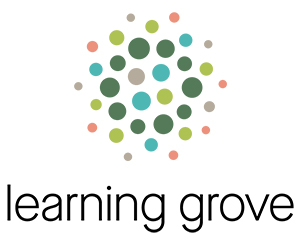The 2020 Kentucky KIDS COUNT County Data Book examines the impacts of the dual pandemics of COVID-19 and systemic racial injustice on children and families with data disaggregated by race/ethnicity. The 30th edition of this publication also features the latest data on 17 measures of child well-being, showing whether outcomes for children across the commonwealth have improved, worsened, or stayed the same over a five-year period. While this data is not reflective of the current conditions for families amidst the COVID-19 crisis, it does indicate pre-existing barriers and areas of needed improvement.
Detailed data is available for every Kentucky county at www.kyyouth.org.
“The COVID-19 pandemic has disrupted our daily routines, hurt families’ ability to meet basic needs, and presented serious threats to the health and safety of all of us. It has also made us painfully aware of the deep disparities among us and that opportunities continue to differ based on the color of your skin. Due to systemic and historical inequities, Black and Brown children are being left behind, and these disparities have only been exacerbated by the global pandemic,” said Dr. Terry Brooks, executive director of Kentucky Youth Advocates.
Across the Commonwealth, in urban and rural settings, children and families of all races and ethnicities experienced significant challenges in 2020. The opening essay uses data collected during the pandemic to outline the disparate impact on children and families of color, as people of color are more likely to work in vulnerable jobs. For example, approximately two-thirds of Kentucky’s Latinx households with children reported losing income from employment since the pandemic began. And, several months into the pandemic, fewer than half of Kentucky’s Black households with children reported being employed in the past week. The County Data Book essay looks at how families are navigating the challenges of the dual pandemics of COVID-19 and racial injustice and the major opportunities Kentucky has to reinvent systems to ensure that all children—Black children, Latinx children, children in families with limited income, children from cities, children from rural areas, children with special needs, and children who have experienced trauma—have the opportunity to thrive.
“We at Kentucky Youth Advocates believe in the power of data to shine light on inequities and inspire action. The dual pandemics have shown us that the status quo was not working for many Kentucky kids and their families. We must use this opportunity to rethink and rebuild our systems in a way that achieves the vision of Kentucky being the best place in American to be young, regardless of the color of your skin, your zip code, or income level,” said Brooks.
For 30 years, the County Data Book has allowed readers and leaders to investigate areas in which Kentucky and its counties are making progress and those needing focused attention for improvement. The publication highlights data in four domains of child well-being: economic security, education, health, and family and community. In each of the domains, Kentucky Youth Advocates dives deeper into a related topic, including improving Kentucky’s unstable child care sector, expanding quality broadband access, examining the usage of telehealth and vaccinations during the pandemic, and analyzing trends in the incarceration of parents with children.
Data highlights from the 2020 County Data Book:
• Children who start formal education with stronger school readiness skills tend to maintain that advantage throughout their schooling. Yet, approximately half of kindergartners enter school insufficiently ready to learn and rates worsened in 78 out of 172 school districts from the 2014-15 to 2019-20 school year.
• Kentucky continues to see high numbers of children with health insurance with 96.3 percent covered in 2018. While all 120 counties have improved rates in children having health coverage, we must work to cover the remaining gap so that all children have access to needed health care.
• First reported last year, the percent of children who are reunited with their parent or primary caretaker when they exit foster care continues to be lower than five years ago, with the most recent data showing only 37 percent of kids achieving reunification.
• In this year’s County Data Book, the indicators on reading and math proficiency are temporarily replaced with data on the proportion of students with an Individualized Education Plan (IEP) due to having a disability and the percentage of students experiencing homelessness. In the 2019-20 school year, 15 percent of Kentucky students had an IEP and 3 percent of students met the federal definition of homelessness.
“For three decades now, the County Data Book has served as an annual report card on child well-being and a roadmap for professionals, policymakers, and community members working to improve the lives of Kentucky children and families. More than one million children across the Commonwealth are relying on all of us—from the statehouse to your house—to put them and their futures first, especially as we move forward on addressing the far-reaching impacts of the dual pandemics,” said Brooks.
Read the County Data Book and access county data profiles and the data dashboard featuring state data from the report disaggregated by race/ethnicity at www.kyyouth.org. View the materials in español at kyyouth.org.
The 2020 Kentucky KIDS COUNT County Data Book was made possible with support from the Annie E. Casey Foundation and a number of KIDS COUNT sponsors, including Passport Health Plan by Molina Healthcare and Kosair Charities. Any findings and conclusions presented in this report are those of the authors alone and do not necessarily reflect the opinions of the Annie E. Casey Foundation or other supporters.
Kentucky Youth Advocates



















